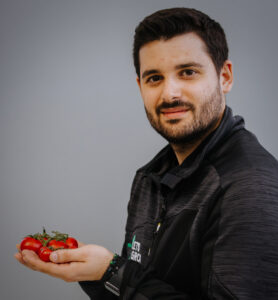How it all started
“Approximately five years ago, I had the privilege of joining the Plant Empowerment team as a senior consultant. At that time, the authors (Jan Voogt, Peter van Weel, and Peter Gelen) had recently launched their book, and it was the perfect moment to put these principles into practice. We assembled a remarkable team consisting of members from Hoogendoorn, Cultilene, Koppert, Svensson, Hortilux, and LetsGrow.com.
Our journey began with great enthusiasm, particularly from United Farms in Mexico, who were captivated by the book and eager to apply its principles. Consultants from each participating company, including Mark, Rene, Remy, and Paul, came together to create our initial strategy, often referred to as the “plan of growth.” This strategy aims to set clear objectives for various aspects of cultivation, such as crop management, climate control, irrigation, pest control, and optimizing artificial light usage and energy consumption. Our ultimate goal, or even better, Plant Empowerment’s goal was to maintain plant balance.
After completing a full crop cycle and comparing Plant Empowerment principles to traditional growing practices, we observed that the first compartment (GPE) achieved higher production while consuming fewer resources. Growers like Or Weiss, who adopted these principles, enjoyed an approximate $12 increase in net profit per square meter.
Encouraged by these results, we extended the application of Plant Empowerment to various locations worldwide, including Japan, Canada, the USA, Europe, and, of course, the Netherlands. Some notable achievements include setting a world record for tomato production with 121 kgs/m2 at BASF – Nunhems, along with an impressive average Light Use Efficiency (LUE) of 24 grams/MJ (TOV variety with an average of 133 grams per fruit) for the entire crop cycle.
Our commitment to innovation led us to participate in the Autonomous Greenhouse Challenge organized by Wageningen University (WUR). We successfully applied our autonomous controls to manage a tomato compartment for six months without physical visits. This exemplified the core of Plant Empowerment, known as Data-Driven growing. In the end, we achieved the highest net profit while upholding sustainability, confirming our motto that “more sustainable is more profitable.”
Research and development
In the past year, I have dedicated one day a week to lead R&D efforts within the Plant Empowerment organization. With the recent addition of six more companies (Van der Ende, Kekilla-BVB, BASF, Rijkzwaan, Lumiforte, and Van Iperen), our main objective is to facilitate knowledge exchange and generate fresh ideas and concepts that can support growers, consultants, investors, and students. After all, they play a crucial role in feeding the world, and it is our duty to offer them respect and unwavering support.”


